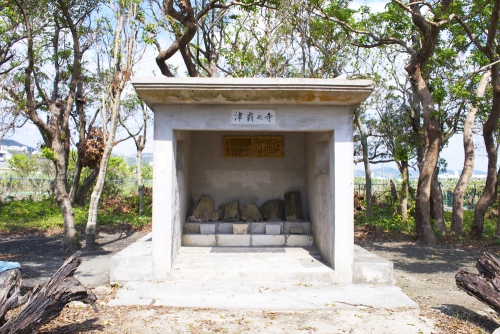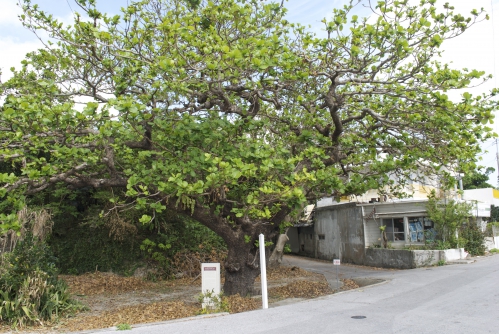TOP >
Cultural Properties

Nakagusuku Cstale |
Path of Histroy |
Cultural Properties |
Eating |
Shopping |
Fun・Activities |
Traditional Performing Arts
Cultural Properties
Many cultural properties are passed down from ancestors which can still be widely seen within the village.

 |
- This is the sacred place of prayer for a good harvest, prosperity for descendants and good health. Asato-no-tera enshrines a spirit stone, Bijuru.
|
 |
- Tsuha-no-tera is located at the south of the Tsuha settlement. It is said that Kamadu Katsuren from Tsuha, began to worship a spirit stone as an incarnation of a god, and built this shrine.
|
 |
- This commemorative tree was planted about 200 years ago when a government official, who had been dispatched by the Shuri court, was reluctantly bidding farewell to the local people as he had been ordered to leave his post.
|
 |
- 思ゆらば里前 島とめていもり
島や中城 花の伊舎堂
“Please visit my birthplace, if you so desire. The place that is known as a beautiful castle town.” In 1959, the Cultural Properties Protection Committee of the Ryukyu Kingdom Government erected this monument.
|
 |
- This monument was built to commemorate the evacuees, who had gone to mainland Japan and abroad, then safely came back to Okinawa by military ship after the Second World War. Three pillars signify “Anxiety” “Joy” and “Hope.”
|
 |
- It is said that the three couples that first moved to the hamlet of Ishado, planted them as a memorial. The trees were replanted after the war, and are currently the third generation.
|
 |
- About 5000 names of the war dead of Nakagusuku Village are inscribed to the memorial monument; Wave of Peace (Heiwa no nami). Wind of Peace (Heiwa no kaze) and the War Memorial are significant reminders of the horror of the war, and also to wish for lasting peace.
|
 |
- A Gan is a palanquin that carries a coffin to the tomb. A Ganya stores the Gan.
|
 |
- Prayer ground located in the Iju settlement. The ground is used for praying for good health, longevity and to give thanks for good harvests
|
 |
- The public well of the village. It is said that the well never dried out even in the drought.
|












![]()




